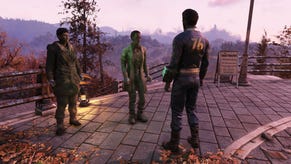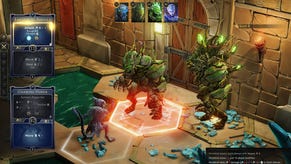Geomerics announces DTI funding for animation project
4th December 2006: UK. Geomerics, a Cambridge-based company specialising in advanced graphics and physics technology, will further develop its revolutionary lighting technology for animation in a collaboration with Cambridge University funded by the Department of Trade and Industry.
The two-year collaborative research and development project will be funded with £180,000 from the DTI's Technology Programme, with Geomerics receiving £100,000.
Welcoming the new partnership, Science and Innovation Minister, Malcolm Wicks said, "The UK has a proud history of innovation in science and technology. We believe that we must work with industry to develop the marketable products and services of tomorrow, so that we can maintain our position as a leading global economy."
"That's why we're supporting Geomerics on this project, which provides a great opportunity to harness the UK's world class expertise and use it to boost our economy and our quality of life. This partnership should help establish British industry as the world leader in this area and be an attractive proposition for investors."
Geomerics' CEO, Chris Doran, said 'I am delighted that we been awarded this grant. Our company philosophy is to be a driving force for bringing new technology to the games industry, and this grant will help ensure that a key component of our research and development roadmap gets off to a flying start. And we could not ask for a better partner than the Cambridge University Engineering Department, which has driven many innovations in this field.'
As games and interactive entertainment evolves, one of the biggest challenges facing developers is that of generating greater realism. Geomerics has already taken a major step in this direction with its revolutionary lighting technology, which incorporates the effects of all of the bounced light in a scene, leading to a dramatic improvement in the level of perceived realism.
The next step is to embed characters realistically within their environment and solve two separate problems. The first is ensuring that the underlying skeleton animation is realistic and captures the subtle nuances of human motion. Potentially this requires storing vast amounts of data, which is why compression schemes with fast decompression at runtime are essential. Once the skeleton is moving correctly, the next problem is to 'skin' it realistically and then light it correctly so that it is believably immersed in its environment. This involves solving a range of problems, from how to construct the skin envelope around a skeleton, through to how to dynamically compute the self-shadowing of the character at runtime.
Geomerics and Cambridge University will be applying their expertise and IP in the field of 'geometric algebra' to tackle problems in animation. Geometric algebra is a powerful mathematical language, which has been applied successfully to a vast range of problems, from motion, capture to cosmology. It is perfectly suited to solving the sorts of problems routinely encountered in producing dynamic animations.
For further information please contact:
Alison Beasley, Lincoln Beasley PR. T: 01608 645756 M: 07966 449130
E: Alison@lincolnbeasley.co.uk www.lincolnbeasley.co.uk
Or visit the Geomerics website: www.geomerics.com
About Geomerics
Geomerics is an ANGLE Technology Progeny® Company
Geomerics has secured intellectual property in the field of geometric algebra. Geometric Algebra is a powerful new form of mathematics that vastly simplifies complex geometric calculations.
Geometric Algebra has its origins in the rather esoteric academic discipline of theoretical cosmology, but it has now been developed for application in a wide variety of disparate commercial applications such as graphics in videogames.
Geomerics' technology provides a major step-change improvement over the competition, and is set to revolutionise the market. Overall the market for computer games is currently worth more than $30bn and growing rapidly, and the market for graphics within these games is worth over $600m per year.
This new approach in applying geometric algebra has been developed by a group of four leading academics from the University of Cambridge: Professor Anthony Lasenby (Professor of Astrophysics and Cosmology), Dr Mike Hobson (University Reader in Astrophysics), Dr Chris Doran (PPARC Enterprise Fellow) and Dr Joan Lasenby (Lecturer in Engineering).
Geomerics has also engaged Professor David Hestenes of Arizona State University (the original inventor of geometric algebra) and Professor Alyn Rockwood of Colorado School of Mines (a geometric algebra and computer graphics expert) in an advisory capacity.
About the Technology Programme
The Technology Programme provides funding using two of the DTI's business support products: Collaborative Research & Development and Knowledge Transfer Networks. Over the period 2005-2008, £370 million in grants is available to businesses to support research and development in technology areas identified by the Technology Strategy Board.
The programme is investing directly in new and emerging technologies and has been designed to help businesses work collaboratively with each other or with academic partners to develop technologies that will underpin products and services of the future. The Technology Programme has allocated over £330m to Collaborative R&D competitions, awarding grants ranging from £30,000 to £2.2 million. Around 450 projects have been funded across 40 technology areas. Nineteen Knowledge Transfer Networks have also been established with funding of around £40m over 3 years.
Further information can be found at: http://www.dti.gov.uk/innovation/tech-priorities-uk/.








